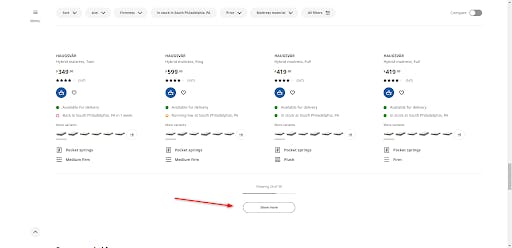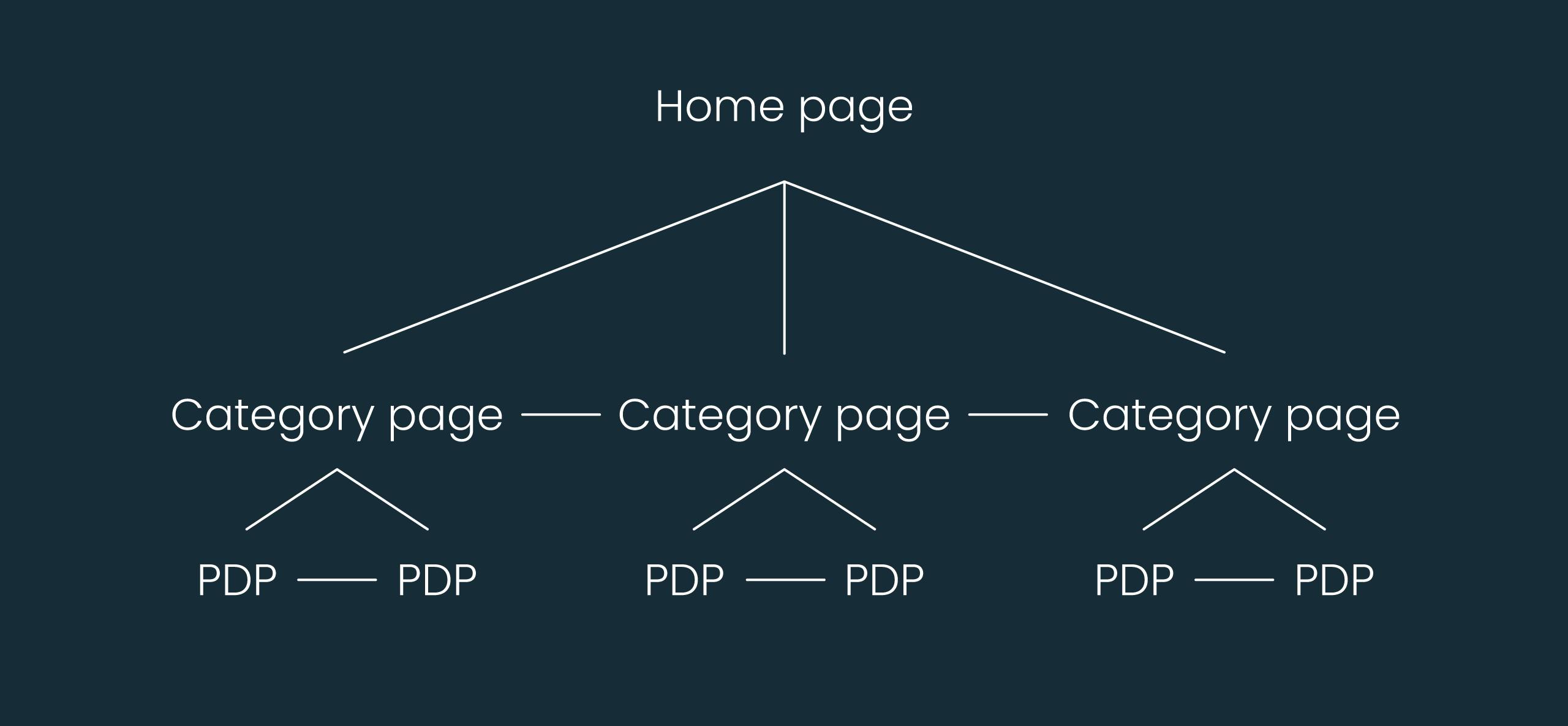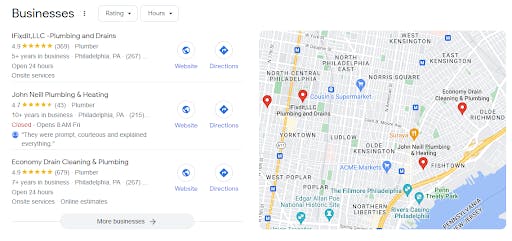How to implement a successful SEO strategy

A step-by-step guide
As an inbound marketing channel, SEO has one of the highest ROI rates of any digital marketing channel. But to realize this ROI, businesses need to invest in the right resources.
Resourcing & Execution
Resourcing issues is one of the top reasons why SEO strategies fail to yield results. If the right resources aren’t available, execution fails and good strategy is left on the cutting room floor.
What are the necessary resources?
SEO Strategist
The SEO strategist is the quarterback of the SEO efforts and this person needs the experience to lead the team. The quality of the SEO strategy comes from experience. An experienced SEO strategist knows which strategies are effective and which are not, which saves time and budget.
You can hire in-house, but depending on the size of the business and the size of the website, this may not be the most economical option. Plus, you’re limited to whoever is currently open to a new position and you’re limited to the expertise of that one person.
An agency is another option, which not only provides the expertise of one person, but also opens you to the experience of the marketing division behind them. Agencies are always looking for more work, so you can shop around and find one that’s a good fit.
Agency strategists have the added benefit of working for clients in multiple different industries, which is a great benefit in terms of knowledge sharing. An agency strategist may discover a new SEO tactic working well for another client that can then be applied to your SEO campaign.
Point of Contact
In agency-client relationships, a primary point of contact is the key link between the agency and the client. The point of contact will review deliverables and offer feedback and approval. They will also act as the liaison between the agency and the client’s internal teams (for example, developers, copywriters, compliance, etc.).
There may be multiple points of contact, but there needs to be a primary POC who can offer final approval and decision-making. Otherwise, decision by committee adds complexity, time and cost to the SEO project, all of which reduce ROI.
Development Team
Successful SEO strategies always include a measurable amount of web development. Accordingly, time and budget must be allocated for it. If development is handled internally, let’s assume your dev team already has a 40-hour-per-week workload. Time needs to be reallocated for SEO, or more resources need to be added. If SEO work is an extra burden on an already strapped dev team, then developers may become resentful, which puts a strain on the SEO-dev relationship.
If development is external (like an agency), then more budget and hours need to be allocated there.
In both scenarios, a lack of dev resources means execution stalls and SEO strategies are hindered by lack of technical implementation.
Copywriters
As SEO strategists provide recommendations for revamping existing content and creating new content, copywriters are crucial. Whether they are internal or external, time and budget needs to be allocated for copywriters.
Subject Matter Experts
In many cases, copywriters are not subject matter experts (SMEs), but SMEs are necessary to review written content for accuracy. On less technical topics, a copywriter may be able to do enough research to write a content draft for SMEs to review. If the subject is very technical, copywriters may need to interview an SME before the drafts are written.
In either scenario, SMEs must allocate time to review content before it goes live. A lack of SME review means that A) content doesn’t go live and momentum stalls, or B) inaccurate content goes live (which is obviously problematic).
Compliance
In technical or heavily-regulated industries (like healthcare, finance, or legal services), compliance needs to review website content before it goes live. The faster compliance can review that content, the faster it goes live and the sooner results will appear. A compliance review period of two weeks or less is ideal.
The Kickoff Process
At the kickoff of any SEO project, it’s important to understand what the business’ goals are, where their priorities lie and any future plans that they have. This can all be accomplished via a kickoff questionnaire.
Subsequently, it’s important to set KPIs in order to determine what constitutes success. Whether that’s lead generation, ecommerce sales or ad revenue.
Then a timeline can be developed with timing for each SEO initiative.
SEO Disciplines
Within SEO there are several different disciplines, and they’re all critical to create a comprehensive SEO strategy. For the most part, these should be executed in the same order regardless of client. This process has proven effective time and time again. There is a right and wrong way to prioritize and order SEO initiatives within the umbrella of an overall SEO strategy.
Technical SEO
A Technical SEO Audit is the first step to a successful SEO campaign, for a few reasons. Firstly, a solid technical foundation is the key to having a well-optimized website. If there are technical issues preventing search engines from accessing and crawling pages, other SEO efforts are a moot point.
For a web page to appear in search results, it must go through 3 key steps:
1. Page is crawled by search engines
2. Page is indexed by search engines
3. Page is ranked by search engines

A page can’t rank if it’s not indexed, and it can’t be indexed if it’s not crawled. On-page optimization, internal linking, backlinking - none of these things will help if search engines cannot crawl and index the pages in the first place. Sometimes we can identify technical roadblocks, remove them and see immediate results.
Secondly, the technical audit gives the SEO strategist a good understanding of what the site looks like. How many pages are there? How is the site structured? This is a great segue into on-page content optimization because now we can create an inventory of site pages and prioritize accordingly.
Here’s a summary of what a technical SEO audit looks at:
- On-site and off-site error codes and redirects
- Robots.txt
- XML and HTML Sitemaps
- Crawlability for indexation
- Internal links and inbound links
- Content optimization (title tags, meta descriptions, H1 headings, images, etc.)
- Site security (HTTPS vs. HTTP)
- Structured data (Schema)
Here are 2 examples of major technical issues that frequently prevent pages from ranking and driving traffic.
Technical SEO Issue: Island Pages
When a new web page is created and published to the internet, it needs to be linked from at least one existing web page. Many CMS platforms do this automatically, but it depends on the CMS and the type of page being created.
Often, new blog posts will be automatically added to a main /blog/ page that chronologically orders and links to all posts. In other situations, this does not happen and the link needs to be added manually. A strong internal linking structure is critical for humans and search engines. Pages that have no links are called island pages (or orphan pages) because they are not connected to the website.
Island pages cannot be discovered when search engines crawl a site. They are either discovered in the XML sitemap, or via backlinks from another site. Neither situation is ideal and island pages generally fail to rank well for target keywords.

Technical SEO Issue: Pagination
When a category page has too many entries to be displayed on one page, pagination is required.
For example, an ecommerce page for basketball shoes might display 24 pairs of shoes on the first page, and another 24 pairs on page 2, etc.

Historically, this was done by including links at the bottom of each category page that would take visitors to subsequent pages. These HTML links were easy for search engines to crawl and find all ecommerce products, or blog posts, etc.

A newer trend uses a “Load More” button to dynamically load additional entries. The entries are not present in the HTML and are dynamically loaded using Javascript. While search engines can render Javascript, they cannot click buttons. When this is the case, search engines cannot discover additional entries beyond the ones immediately present on the page.
These are two major issues which can prevent search engines from finding website pages, but there are dozens of other items that we evaluate with the technical SEO audit. The audit is ultimately the sum of the parts and it’s important to implement audit recommendations as comprehensively as possible.
Content Initiatives
Content Gap Analysis
The content gap analysis looks at keyword rankings for a business’ website and the rankings for 3-4 competitors. We look at what keywords each of the websites rank for, categorize them by topic and identify content gaps. We can see where competitors are winning, and identify key topics and website pages that are missing.

Keyword Research
Keyword research is the most critical part of on-page optimization. The content gap analysis gives us a head start on identifying which keywords to target. We will evaluate how well a site’s existing pages rank for target keywords and identify new pages to be created in order to rank for new keywords.
Keyword research is delivered in a mapping document where groups of specific keywords are mapped out to specific pages.
Existing Content (Content Audits)
With existing content, we use keyword research and perform content audits. Content audits add, remove, restructure and optimize the content on each page so that the pages can rank better for their target keywords. We incorporate competitive analysis into this process so that we can ensure we are creating content that is better than competitors.
On-page optimization includes:
- Title tags
- Meta descriptions
- H headings
- Content structure
- Keyword usage
- Internal links
- Image optimization (alt text and file names)
New Content (Content Outlines)
When we recommend creating new content, we create content outlines. These are wireframes for what a new page will look like and include paragraph headings and a brief description of what each paragraph will be about. The outlines are subject to review before the content is written to ensure that the page aligns with the business’ content guidelines and tone of voice.
Here’s the usual content writing process:
1. Keyword research is conducted
2. Keyword research is reviewed and approved
3. Content outlines are reviewed and approved
4. Content is written
5. SEO strategist reviews written content
6. Subject matter expert reviews written content
7. Revisions are made (if needed)
8. Final version goes to compliance
9. Revisions are made (if needed)
10. Content is pushed live
This comprehensive process ensures that all relevant stakeholders are included in the production process to yield content that aligns with the company’s goals and values.
Internal Linking
Internal links are important so that people and search engines can move between relevant pages on a website. Internal links are not just for SEO, they connect adjacent products and services that go together. An internal linking review will look at important pages and recommend internal links if there are not a sufficient number.

This is especially important when new content goes live. Brand new pages may not have any links when they go live, and building internal links will give the page more authority and help people find it.
Linking
Linking is an important, but misunderstood (and often maligned) part of SEO. Historically, backlinks have acted as citations between websites, and websites with a better quality and quantity of citations rank higher.
From day one, this has resulted in loads of low quality, spammy outreach from people trying to get backlinks. Websites are supposed to gain backlinks because they’re authoritative and instead, practitioners work to get them so websites can become authoritative.
Search engines have recognized this and gradually decreased the value of backlinks as they use more modern ranking factors that are less easily manipulated by practitioners. But for now, backlinks still matter and SEO strategists are stuck with them as a necessary evil.
Almost everyone who works with websites knows the value of a link, and no one is willing to give them away for free. It’s important to devise linking strategies that provide value. A good SEO strategist aspires to create linking strategies that have other tangible benefits than just links.
There are a number of ways that we can launch link building campaigns, or work to add value to existing marketing efforts. Some of them include:
- Leveraging existing corporate partnerships
- Sponsorships
- Scholarships
- Thought Leadership
- Product reviews
- Influencer work
Local SEO
Not all businesses have a local presence, but for those that do, local SEO is critical.
Business Profile Optimization
Businesses must claim/create and optimize a Google My Business listing and a Bing Places listing in order to have a local presence. These profiles appear in Google Maps and Bing Maps results, and also in localized search results.
When a search engine determines the intent behind a search is local, they will show localized results, including a map pack. The map pack is essentially a mini version of Google/Bing maps embedded in the search results, which shows 3 business listings.

Third Party Citation Optimization
Search engines want to present the most accurate information possible. If the information in a Google or Bing profile is inaccurate, it reflects poorly on Google/Bing and people are less likely to use those search engines.
As a result, search engines look to third party sites to verify key information like name, address, phone number hours, etc. Some of these sites include Facebook, Foursquare, and Yellow Pages, but there are others. If search engines can corroborate key information, then they have higher trust in the accuracy. This results in higher rankings in local search.
Analysis & Reporting
When a company invests in SEO and all the resources that it requires, someone needs to be reporting on the progress that has been made and the results that have been achieved. Whether it’s in-house, or from an agency, reporting and analysis usually occurs monthly, although sometimes more frequently.
Reporting should cover organic sessions (year-over-year and month-over-month) plus all the KPIs established at the start of the project. And there needs to be analysis explaining what SEO initiatives were completed in the past month, how they impacted performance, and what is queued up for the coming month.



